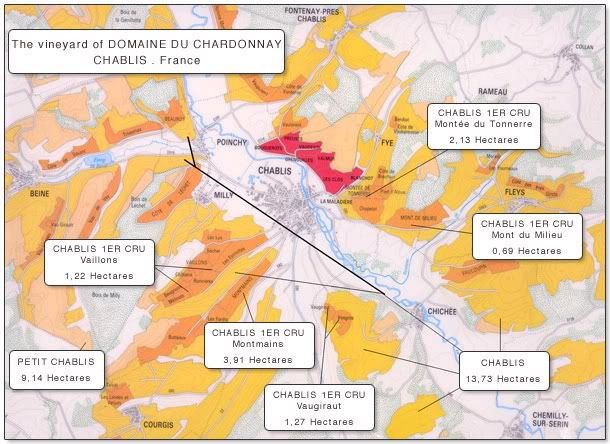
Hello and welcome to Week 20 of our Wine Berserkers Weekly Burgundy Appellation Tasting Series!! This week, we are in new territory in focusing on the wines and region of Chablis. As mentioned before, I will be in the region this week to learn and discover more about what makes Chablis special. We can start here with the classification:
Grand Cru: (100 ha) 54 hl/ha limit. Minimum Potential Alcohol is 11%
Les Clos 26.96 ha (considered for hundreds of years to stand as the pinnacle of Chablis). This was the first vineyard planted by the monks from St.-Martin de Tours.
Bougros 15.86 ha
Les Preuses 11.81 ha
Vaudésir 16.23 ha
Grenouilles 9.38 ha
Valmur 12.89 ha
Blanchot(s) 13.14 ha
La Moutonne 2.35 ha (honorable mention recognized by the BIVB, but not the INAO as being an official Grand Cru) This is a monopole of Domaine Long-Depaquit
Premier Cru (750 hectares total) 58 hl/ha limit. Minimum Potential Alcohol is 10.5%
Mont de Milieu
Montée de Tonnerre
Fourchaume
Vaillons
Montmains
Côte de Léchet
Beauroy
Vauligneau
Vaudevey
Vaucoupin
Vosgros
Les Fourneaux
Côte de Vaubarousse
Berdiot
Chaume de Talvat
Côte de Jouan
Les Beauregards
While there are but 17 names of Premier Crus in Chablis, these actually are made up from 41 different premier cru vineyards.
Chablis (generic Chablis) (4.400 ha) 60 hl/ha limit. Must be from grapes located within the 19 accepted communes. Minimum Potential Alcohol is 10%
Petite Chablis (1.550 ha) 60 hl/ha limit Minimum Potential Alcohol is 9.5%
While there are other types of grapes grown in Chablis such as Aligote, Cesar, Gamay, Melon de Bourgogne, Pinot noir, Pinot blanc, Pinot gris (known locally as Pinot Beurot), Sauvignon blanc, Sacy (aka Tressalier) (at one time was planted in a ratio at parity with chardonnay) and Tressot, everything other than chardonnay (locally known as “Beaunois”) is forced to be classified as “Bourgogne”. Of note, it is the slopes which were classified as Grand Cru, not the individual climats, such as in La Côte d’Or.
Geology:
The soil in Chablis is quite special, being located in the “Kimmeridgian Chain”. This type of soil is typically referred to as a “chalky marl”. There is a great abundance of sea bed fossils here, especially oyster shells mixed into the limestone dominated mix with clay. Of note, there is also a large composition of what is known as Portlandian, which is Calcaise de Barrois along the ridges encircling Chablis, atop the amphitheater and village of Chablis. Kimmeridgian is focused where there are both Grand Cru and Premier Cru, with Calcaire de Tonnere resting in the basin which the village and surrounding area rests on.

Photo Credits: WIKI file